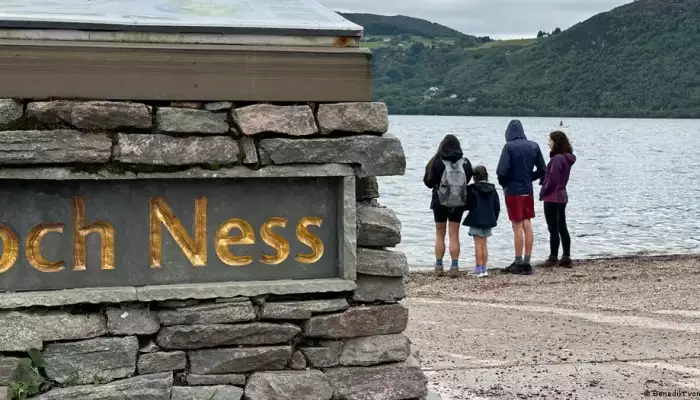
Several reports of possible sightings have been recorded as the biggest Loch Ness Monster hunt in decades ended on Sunday in Scotland. However, no conclusive evidence of the famous beast has yet been found.
According to project leader Alan McKenna, he received a series of videos and tips from people following live streaming cameras aimed at the famous lake in the Scottish Highlands.
However, going through the data and separating fact from wishful thinking will take a long time, he said.
The Loch Ness Center has partnered with the volunteer research team Loch Ness Exploration to organize "The Quest." According to the organizers, the two-day hunt was the most systematic search since 1972 for the elusive or imaginary monster known as "Nessie."
They said they would be using surveying equipment that had not previously been tried at the lake, including thermal drones. A hydrophone was also used to detect acoustic signals under the water.
Volunteers from around the world were allocated 17 locations around the lake from which to monitor for any signs of "Nessie," while others took to boats. Hundreds of fans, meanwhile, watched Loch Ness via webcams.
McKenna and his team went to the loch several times and dropped an underwater microphone, called a hydrophone, in hopes of solving the mystery. During one of the tests on Friday, "strange noises" could be heard, he said. However, a check at the same location on Sunday revealed nothing.
What is the Loch Ness Monster?
Legends around a monster in the body of water emerged as early as 565 AD, when the Irish monk Saint Columba wrote an account of the creature attacking a swimmer.
In 1934, the UK's Daily Mail published a photo that purported to show the Loch Ness Monster. The famous "Surgeon's Photo" was later revealed to be a hoax, but helped popularize the image of the creature internationally.Loch Ness, which lies in the Scottish Highlands, is the United Kingdom's largest lake by volume, at 23 miles (36 kilometers) long and with a maximum depth of 788 feet (240 meters).
The Loch Ness Center in the Highland village of Drumnadrochit says that there have officially been 1,100 recorded sightings of the monster.
This weekend's search is not the first time researchers have combed the lake for signs of the Loch Ness Monster. In 2018, a DNA survey conducted by a group of researchers found no evidence of any large animals in Loch Ness, only detecting the presence of numerous eels.